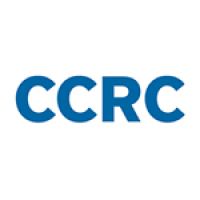By Clive Belfield and Thomas Brock
Since March 2020, the pandemic has had a profound effect on workers. Economists typically focus on trends in employment and earnings, and the pandemic has significantly affected both. But it has also transformed the “world of work” by causing a radical shift in how workers use technologies. Many job tasks are now online, with significant changes to office management and collaboration. The pandemic has also affected labor contracts, with changes in work hours, terms of employment, and a big move from office work to working at home.
In a prior post, we looked at how the COVID-19 pandemic has changed the postsecondary plans of community college students. Here, we look at how the pandemic has affected community college graduates out in the workforce.
As with most recessions, the effects of the pandemic have not been uniform across workers and sectors. Some work became near-obsolete almost immediately: In April 2020, spending in hotels and restaurants was down by 66% from February 2020; as of December 2020, spending was still down by 26%. By contrast, economists at Harvard University’s Opportunity Insights declared that by November 2020 the recession had “nearly ended” for high-wage workers. Workers have not been affected equally, and their education levels may be one reason why.
Since the end of April, the U.S. Census Bureau has surveyed households on their economic activity in the time of COVID-19. The survey provides near real-time snapshots of how the pandemic has shaped household work patterns. The survey is conducted every 1–2 weeks and involves a random selection of 100,000 addresses from across the country that represent the entire population. We analyzed data from over 270,000 respondents aged 25–64 who reported their educational attainment as high school graduation or associate degree (HS graduates and CC graduates). Historically, community college graduates have had more economic success than high school graduates as measured by employment rates and earnings. This advantage has been maintained, and in some cases increased, during the pandemic.
Earnings and Employment for Community College Graduates
On average, community college graduates earn about 15% more than high school graduates. The pandemic has not changed that gap. In fact, it seems to have had very little impact on the median weekly earnings of people who are fully employed. From 2015 to 2019, weekly earnings of community college graduates grew by approximately 3–4% each year; in 2020, they also grew by 4%. The same consistent trend holds for high school graduates, but with growth stable at 2–3%. Broadly, earnings gaps and trends remained stable despite the pandemic.
Just before the pandemic, in March 2020, unemployment rates for CC and HS graduates were 3.7% and 4.4% respectively—but the pandemic resulted in a dramatic shock. In April 2020, these unemployment rates rose four-fold, to 15% and 17.3% respectively. In the following months, unemployment rates declined from these peaks, with the rate for CC graduates 2 percentage points below that of HS graduates. Overall, unemployment gaps have widened slightly, showing that the shock was worse for HS graduates and that their recovery was slower.
The graph below shows employment rates for HS and CC graduates over the course of the pandemic. Normally, employment rates hover around 70–80%. In April 2020, rates had fallen to 50–60%. They rose slowly over the next few months before stalling at 5–10 percentage points below historical averages and leaving a wide gap between HS and CC graduates.
Employment Rates for High School and Community College Graduates in 2020

Source: U.S. Census Household Pulse Survey, waves 1–19.
COVID-19 and the World of Work
There are many ways in which COVID-19 might affect the world of work and reduce the demand for labor. Demand for products or services may fall. Government restrictions may force businesses to close. Health and safety concerns might increase costs and necessitate labor layoffs. Workers may lose their jobs, face pay cuts, or experience contractual changes. Critically, all workers directly face the possibility of personal infection or quarantine, which might cause them to lose their job, be unable to look for work, or have to take temporary leave.
These effects are unlikely to be uniform across HS and CC graduates. These groups may vary insofar as they work in businesses more susceptible to demand shortfalls, government restrictions, or cost pressures. Also, the direct burden of COVID-19 might vary in severity.
The graph below shows layoffs due to COVID-19. These layoffs include people who have not worked in the last seven days because the pandemic led to a direct layoff, a reduction in business (furlough), or a temporary or permanent business closure. In the early months of the pandemic, 20–25% of people reported being laid off. The rate fell in subsequent months, and by the end of the year, it was down to 5–10% of the workforce. Notably, the layoff rate was 3–5 percentage points lower for CC graduates than HS graduates; the initial shock was weaker and the recovery was faster.
Layoffs in 2020 Due to COVID-19 Among High School and Community College Graduates

Source: U.S. Census Household Pulse Survey, waves 1–19.
The next graph shows the percentage of HS and CC graduates reporting they had not worked over the last seven days because they were sick with coronavirus symptoms, caring for someone with coronavirus symptoms, or concerned about getting/spreading the coronavirus. Through June 2020, these direct effects were small and consistent: Only 1% of workers regardless of education reported COVID as a reason for not working. Over the course of the pandemic, this direct effect intensified. However, the impact for HS graduates was 1–2 percentage points greater than that for CC graduates. Thus, one way in which CC graduates have preserved their economic status is by avoiding direct experience of COVID-19.
High School and Community College Graduates Whose Work Was Directly Affected by COVID-19

Source: U.S. Census Household Pulse Survey, waves 1–19.
Health insurance coverage may mitigate the effects of COVID-19. As shown below, CC graduates are much more likely to have access to employer-supported health insurance. This gap has stayed broadly constant, even as labor market disruptions have reduced overall access to private health insurance.
High School and Community College Graduates With Employer-Provided Health Insurance

Source: U.S. Census Household Pulse Survey, waves 1–19.
Another way to mitigate the effects of COVID-19 is to telework (work from home). Households with a CC graduate are much more likely to have switched to telework: Over one third had a member who newly worked from home as a result of the pandemic. Controlling for a set of individual characteristics, including household size and composition, we find that CC graduates are more than twice as likely as HS graduates to telework.
Finally, we can see some of the real economic consequences of the pandemic, both for HS and CC graduates, in survey responses about housing security and living expenses. As the pandemic continued through 2020, and despite the CARES Act, many families faced housing insecurity, and over one third found it difficult to pay their expenses. Even as these economic insecurities are heightened for high school graduates, they are also pressing for community college graduates.
Economic Insecurity in the Time of COVID-19

Source: U.S. Census Household Pulse Survey. N = 279,058. Question asked during the months of April to December 2020.
The 2020 pandemic profoundly impacted the U.S. economy. The main effect was an extreme short-term shock to employment in April 2020. Since that time, most people have gone back to work, though the Congressional Budget Office and the Federal Reserve forecast that the national unemployment rate will remain above 6% for the next three years. The pandemic also hastened changes in how people work, with many more people working remotely and using technology to communicate and perform their jobs.
Community college graduates experienced all of these disruptions. Nevertheless, their labor market experiences were less disrupted than those of high school graduates. This reinforces the conclusion that an associate degree conveys value in the workforce. Community college graduates earn more, have more stable jobs, work in sectors and firms less susceptible to disruptions from COVID-19, and, notably, are able to mitigate the direct effects of the virus. As the pandemic develops in 2021, we will see if these advantages hold up and help community college graduates to maintain their economic security.
Clive Belfield is a professor of economics at Queens College, CUNY, and a CCRC research fellow. Thomas Brock is the director of CCRC.





